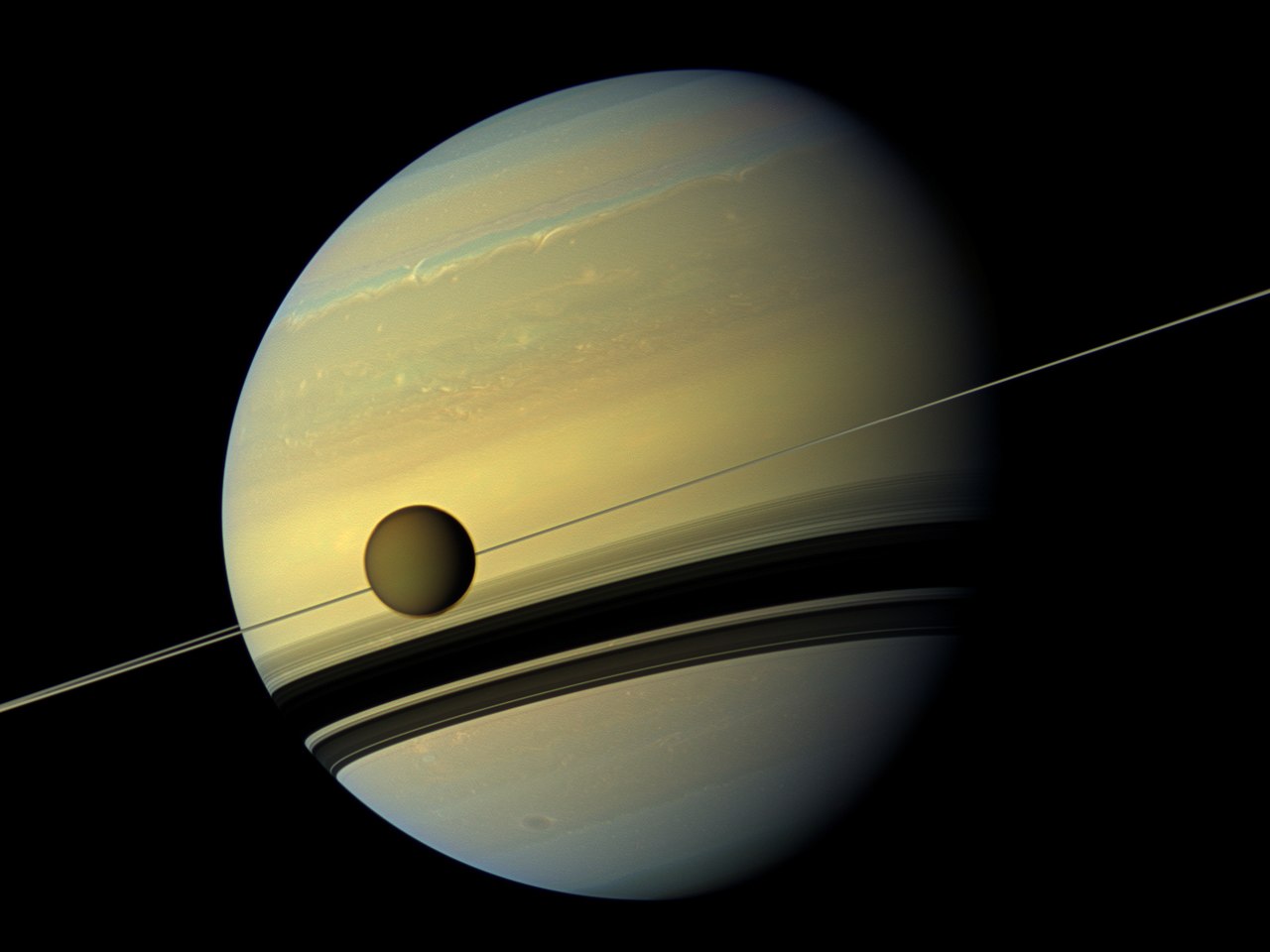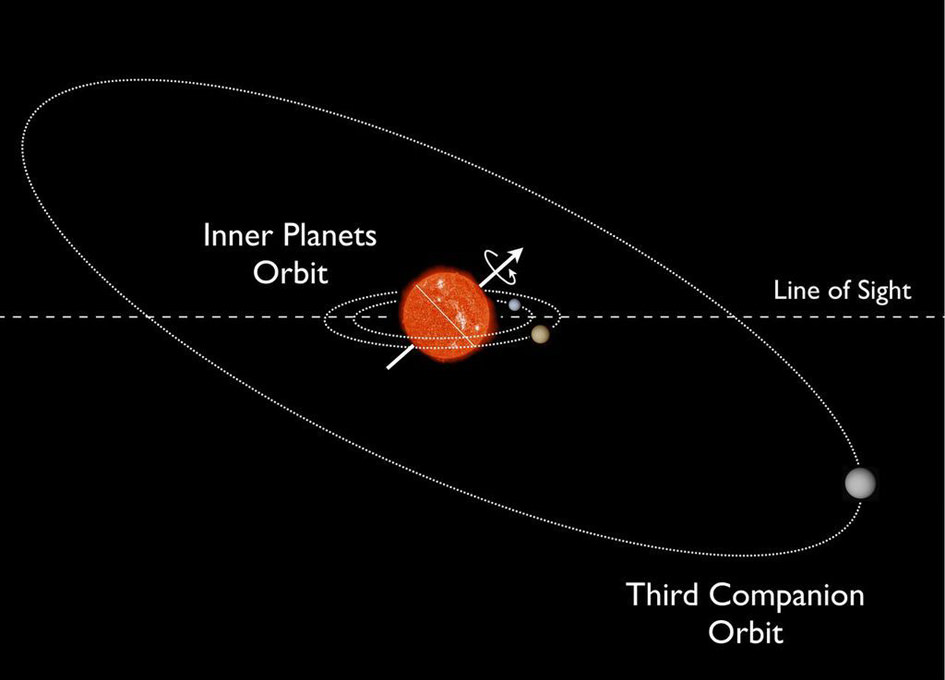Giant planets like Saturn don’t just tilt over all by themselves: something has to knock them over, or tug on them gravitationally, to push them off axis. Scientists expect that when new planets are born, they form with almost no tilt at all, lining up like spinning tops, with their equators level to the orbital plane in which they circle around their sun.
But no planet in our solar system is perfectly level. Jupiter is the closest, boasting an obliquity (tilt) of just 3.12 degrees. Earth’s obliquity is much more substantive at 23.45 degrees, causing us to experience an annual cycle of seasons as our homeworld wobbles on its axis. Saturn’s tilt is more extreme yet, with an obliquity of 26.73 degrees (though it’s nowhere near as extreme as Uranus, which is practically sideways, spinning at a 97.86-degree angle to its orbital plane).
We can learn a lot from these obliquities.
Continue reading “Did Titan Give Saturn its Tilt?”

